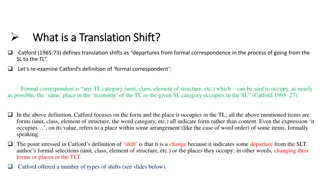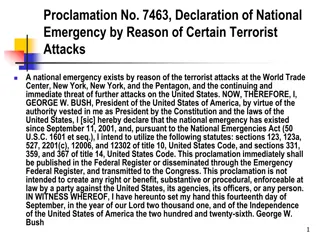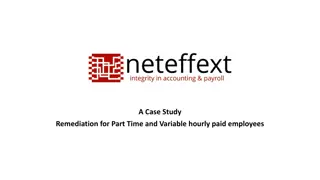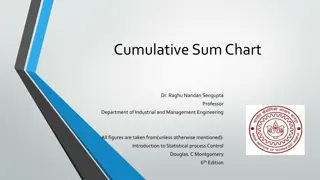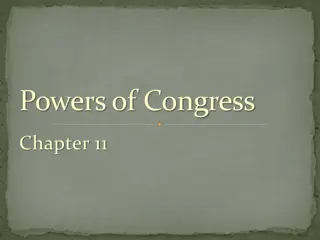The Shifts in Economic Powers Over Time
Jeffrey Frankel, Harpel Professor at Harvard Kennedy School, discusses the historical and recent changes in global economic powers, focusing on the rise of China, policy mistakes in the EU and US, and the long-term patterns of economic dominance. He considers the challenges and opportunities presented by shifting economic landscapes and provides insights into the complexities of international currency status and GDP comparisons between nations.
Download Presentation

Please find below an Image/Link to download the presentation.
The content on the website is provided AS IS for your information and personal use only. It may not be sold, licensed, or shared on other websites without obtaining consent from the author.If you encounter any issues during the download, it is possible that the publisher has removed the file from their server.
You are allowed to download the files provided on this website for personal or commercial use, subject to the condition that they are used lawfully. All files are the property of their respective owners.
The content on the website is provided AS IS for your information and personal use only. It may not be sold, licensed, or shared on other websites without obtaining consent from the author.
E N D
Presentation Transcript
Shifts in Economic Powers Jeffrey Frankel Harpel Professor of Capital Formation & Growth Harvard Kennedy School, Harvard University Boston, Wednesday, 11 July, 2018
Shifts in Economic Powers 1. Long-term perspective on the rise & fall of great powers 2. The rise of China. Did its GDP pass the US in 2014? 3. China's recent slowdown Explanations. 4. Rivals for top international currency status: The $, , & RMB. 5. Policy mistakes in EU & US. 2
1. The long-term rise & fall of great powers From 1500 to 1820, China was the world s largest economy. PPP basis The global contribution by major economies from 1 AD to 2008 AD according to estimates by Angus Maddison, 2007, Contours of the World Economy, I - 2030 AD (Oxford Univ. Press). 3 Note: Flag is Qing Dynasty s
In the 19th century: Within Western Europe, the UK economy dominated, but was surpassed by Germany s GDP in 1900. According to Graham Allison s Thucydides Trap, the challenge of Germany s rise led to World War I, a worrisome precedent as China s rise challenges the US. US GDP passed the UK in 1872, an example when the Thucydides Trap was avoided, and US surpassed all of Western Europe by 1950. The Soviet Union was at #2, 1940-1980, succeeded by Japan, viewed as a juggernaut in the 1980s. 4
The rankings today Largest economies by nominal GDP in 2017 Source: IMF estimates (WEO database, April 2018). Note: At current exchange rates, France may be ahead of India. Italy, Brazil, Canada, Russia & Korea follow. 5
2. The rise of China. Did its GDP pass the US in 2014? Headlines about China s economy 4 years ago: China poised to pass Us as world s leading economic power this year April 30, 2014, Financial Times. China surpasses U.S. to become largest China surpasses U.S. to become largest world economy world economy Dec. 6, 2014, FoxNews.com. based on the latest 6-year update from the World Bank s International Comparison Program. But was this right? Is China now bigger than US? 6
The facts On the one hand, China s economic miracle is genuine: Growth 10% p.a. for 3 decades is historic. It took the UK about 58 years to double income, starting from 1780 US: 47 years, from 1839 Japan: 35 years, from 1885 Korea: 11 years, from 1966. But it took China only around 8 years, from 1987. On the other hand, China is still a developing country. In 2017, its income per capita was only average, globally, ranking 79th among 189 countries, between Costa Rica & Brazil. 7
The claim to rival US size comes, of course, from multiplying a middle income-per-capita times 1.3 billion people. Measuring GDP The dragon takes wing May 3rd 2014 | New data suggest the Chinese economy is bigger than previously thought. 2014 France 9 www.economist.com/news/finance-and-economics/21601568-new-data-suggest-chinese-economy-bigger-previously-thought-dragon
Chinas GDP reportedly passed the US in 2014. But I call that a mis-application of the PPP numbers from the World Bank s ICP project. 10
Use actual exchange rates to compare GDP Use PPP rates to compare income per capita e.g., to judge if: governments have successfully raised living standards; e.g., to judge: How big is the market, from the view of multinational companies? How big should a country s quota be in the IMF? How many ships can its navy buy? How big is the global role for its currency? a country is rich enough to cut pollution; the currency is undervalued, given its income. 11
Measuring GDP Using actual exchange rates gives a different answer: The US is still 45% bigger than China, even in 2018,23.3 %/ 16.1% , 2014 China 13 Thanks to Qing Yu
China has not yet overtaken the US. Author s calculations. (Thanks to Qing Yu.) The cross-over won t come before the 2020s. In 2029, if the growth differential 4% and there is no real appreciation. 14
3. Chinas recent slowdown China s growth has slowed relative to past 10% average. 15
Reasons for Chinas long-term slowdown Natural convergence Technological catch-up; Diminishing returns to capital Krugman (1994), Young (1994, 1995); Rural-urban migration Lewis turning point (1954); Rising costs of labor & land; Services have a lower rate of productivity growth. Middle-income trap? Eichengreen, Park & Shin (2012) * Regression to the mean Prasad (2009), Pritchett & Summers (2014). * Aging. * * See appendix. 16
4. Rivals for top international currency status: The $, , & RMB An international currency is one used outside its home country. Uses: Central banks holdings of reserves are the most easily quantified, and probably the most important, of the various measures. 17
The US $ had passed by 1955 and has been #1 ever since. Central bank holdings of FX Reserves, 1947-2013 Eichengreen, Chitu & Mehl, 2017 18
Some predicted that the RMB might soon challenge the $ for #1 carried away, no doubt, by the China s stunning economic rise. E.g., Subramanian (2011a, b) claimed that the RMB might overtake the $ by 2020. But in fact the RMB still has a long way before it is a top international currency. It is just now becoming a normal currency. 19
The traditional list of criteria for determining international currency status: Historical inertia, due to network effects that entrench #1 Vs. the new view which says change comes rapidly Eichengreen(2011): $ caught up with in 1924. Size of the home economy approximately equal for the $, , & RMB Reputation of the currency for retaining value led to mis-predictions in 1990s re the rise of DM & . Depth/liquidity/openness of home financial market. which the RMB is missing; including a deep, liquid, integrated government bond market which the euro is also missing (not by accident). 20
By various measures In world payments, The RMB passed the Swiss franc in 2014 to become the 7th most-used currency but with a market share of only 1.4 %, still far behind $ & . Source: SWIFT. In foreign exchange reserves, New data on Central Bank holdings of RMB revealed, Q IV, 2016: The RMB is only in 7th place, well behind Australian $. Source: IMF COFER, March 31, 2017. In foreign exchange trading volume, Only in 2016 did the RMB break into 8th place with a market share of 4%, passing the Swedish kronor, but still behind the CHF. Source: BIS, Dec. 2016 www.bis.org/publ/rpfx16.htm the RMB still lags far behind. 21
5. Policy mistakes in China, Europe & US. i. Policy reforms needed in China ii. Policy mistakes in the EU & eurozone iii. Policy mistakes in the US. 22
(i) Chinas government needs some reforms As recognized by the Chinese themselves, e.g., made official at the Third Plenum of 2013 Some reforms have been pursued: Anti-corruption drive. Shifting composition of GDP From Investment & Net Exports, to Consumption From Manufacturing to Services. But others have seen very little progress: Rural land rights & hukou system, Market orientation, Shrink State Owned Enterprises, Clean up the environment. Fiscal expansion, though well-timed (esp. in 2009), was allocated too much to heavy investment, e.g., steel capacity.23
But Chinas economic policy mistakes are out-done by the EU s & the US. (ii) Europe Pro-cyclical fiscal policy An extreme example: Greece After 2010, periphery needed structural reform, not fiscal austerity. Brexit. I won t count refugee policy as a mistake because there was no good solution. Even if the euro itself was not a mistake, I see 9 mistakes in its execution. 24
Nine mistakes in the execution of European EMU 1. The euro membership should not have been expanded so quickly. 19 countries was too many for the Optimum Currency Area test. The problem of fiscal moral hazard, though correctly identified at Maastricht, had not been effectively addressed, especially because of an optimism bias in official forecasts. Euro-wide banking regulation was omitted. When capital flowed copiously to periphery countries and interest rate spreads fell almost to zero, this was viewed as a good thing rather than as a sign that the moral hazard problem had not been solved. Too-tight ECB monetary policy, 2008-12. The failure to send Greece to the IMF early in the crisis, say Jan. 2010. The failure to write down more of the debt, earlier, at a time when most was still held by private creditors. The stubborn belief, esp. in Germany, that fiscal austerity is not contractionary, even in the short run. Result: Debt/GDP . When Alexis Tsipras became PM in Jan. 2015, he misplayed his hand. 25 2. 3. 4. 5. 6. 7. 8. 9.
Chinas economic policy mistakes are easily out-done by the EUs & the US, cont. (iii) The US Where would I start? Perhaps January 2001. But Trump makes Bush look a paragon of competence! A repeat of pro-cyclical fiscal policy: Taxes are cut & spending is boosted at the peak of the business cycle. Pro-cyclical macroprudential policy: deregulation at the peak of the financial cycle. => the next recession may be a severe one. Assaults on health insurance, the environment, etc. A reckless trade war. which is hurting US producers even in the short run, aside from the long-term damage to the postwar liberal multilateral order. 26
Jeffrey Frankel Harpel Professor of Capital Formation & Growth Harvard Kennedy School, Harvard University Home page: https://scholar.harvard.edu/frankel Monthly column at Project Syndicate: www.project-syndicate.org/columnist/jeffrey-frankel Blog: www.jeffrey-frankel.com/ Twitter: @JFrankelEcon
Appendix I: Reasons for long-term slowdown in China s growth i. Middle-income trap? ii. Regression to the mean. iii. Aging. Is China undergoing a smooth transition to a slower long-term growth path ? 28
Is there a middle-income growth trap? Avoiding middle-income growth traps, Pierre-Richard Ag nor, Otaviano Canuto, Michael Jelenic, VoxEU, Dec. 2012 Formal evidence on growth slowdowns and middle-income traps has suggested that at per capita incomes of about US$ 16,700 in 2005 constant international prices, the growth rate of per capita GDP typically slows from 5.6 to 2.1%. Citing Eichengreen, Park & Shin When Fast Economies Slow Down: International Evidence and Implications for China , Asian Ec. Papers, 2012. 29
Pritchett & Summers (2014): Regression to the mean fits the data better than middle-income trap 30 Asiaphoria Meets Regression to the Mean, NBER WP No. 20573, Lant Pritchett and Lawrence Summers
Demographic factors are reducing growth rate in China even more than in other countries 31
Chinese transition to slower growth path Hard landing or soft landing? High investment in heavy industry is unsustainable. Debt Leverage becomes unsustainable when growth slows. Bad loans in the shadow banking system. $-denominated loans especially problematic in EMEs. Are financial bubbles-and-crashes a rite of passage that newly arrived economic powers undergo? Holland 1637, England 1720, France 1720, US 1929, Japan 1990, Korea 1997. So far, the hard landing has been avoided despite the financial-market fears of summer 2015. 32
Chinese foreign exchange reserves fell after June 2014. Through July 2018 DATA SOURCE: PEOPLE S BANK OF CHINA, via TRADINGECONOMICS.COM 33
Markets were upset by RMB depreciations in Aug. 2015 & Jan. 2016. FRED Graph
Appendix II: What determines international currency? Determinants of Reserve Currency Shares Pre-euro Panel Regression, 1973-98(182 observations) Coefficient estimates Standard errors GDP ratio 0.12 Inflation differential - 0.14 Ex. rate variability - 0.05 FX turnover 0.02 GDP leader 0.03 Lagged share 0.90 [0.06] [0.05] [0.03] [0.02] [0.01] [0.03] Source: Chinn & Frankel (2007). Notes: Figures in bold face are significant at the 10% level. Adj. R2: 0.99 Dependent variable is reserve currency shares in logit form. Estimated using OLS, no constant. All variables are in decimal form. GDP at market terms. 36
Looking back on the 1990s, one would wonder that anyone expected the DM or yen to challenge the $ .8 .7 USD .6 .5 .4 .3 DEM EUR .2 ECU .1 JPY GBP FFR NLG SFR .0 1965 1970 1975 1980 1985 1990 1995 2000 37
China remains far less open financially than the US or UK 3 De jure financial openness index (Chinn-Ito KAOPEN). US UK 2 Financial openness 1 Brazil 0 Russia -1 China India -2 00 01 02 03 04 05 06 07 08 09 10 Higher values denote higher financial openness. Source: Chinn (2012). 38
The RMBs share of FX trading has risen but is still well behind SF, let alone or . [Swiss flag at sea] Courtesy of Menzie Chinn 39
Worldwide International Currency Usage Now Value share of main currencies in trade activity Data Source: SWIFT Watch, MT 103 40 Worldwide Currency Usage and Trends Information paper prepared by SWIFT in collaboration with City of London and Paris EUROPLACE Dec. 2015
References by the speaker underlying this talk On China s economy Globalization and Chinese Growth: Ends of Trends? Il Grande Sconvolgimento, edited by Paolo Onofri (Il Mulino: Bologna), 2016. HKS RWP 16-029. "Misinterpreting Chinese Intervention in Financial Markets," China-US Focus, Sept. 10, 2015. China is Not Yet Number 1, VoxEU, May 9, 2014. International Currency Rankings The latest on the dollar s international currency status, VoxEU, Dec. 2013. Internationalization of the RMB and Historical Precedents, Journal of Economic Integration, 2012. Summaries at RIETI & VoxEU, Oct. 2011. Will the Euro Eventually Surpass the Dollar as Leading International Reserve Currency? with M. Chinn, in G7 Current Account Imbalances: Sustainability and Adjustment, R.Clarida, ed. (U. Chicago Press), 2007. Still the LinguaFranca: The Exaggerated Deathof theDollar," ForeignAffairs, 1995 Euro mistakes German Ordoliberals Vs. American Pragmatists: What Did They Get Right or Wrong in the Euro Crisis? in Ordoliberalism: A German Oddity? 2017, edited by T.Beck & H.Kotz (CEPR: London) Chapter 11, pp. 135-143. Causes of Eurozone Crises, July 2015, Causes of Eurozone crises past and future, edited by Richard Baldwin & Francesco Giavazzi (CEPR: London). 41
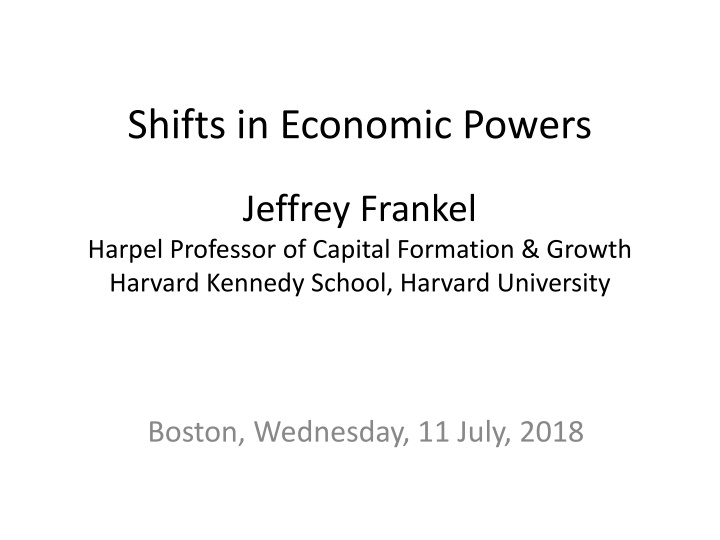

![READ⚡[PDF]✔ Emerging Space Powers: The New Space Programs of Asia, the Middle Ea](/thumb/21554/read-pdf-emerging-space-powers-the-new-space-programs-of-asia-the-middle-ea.jpg)



